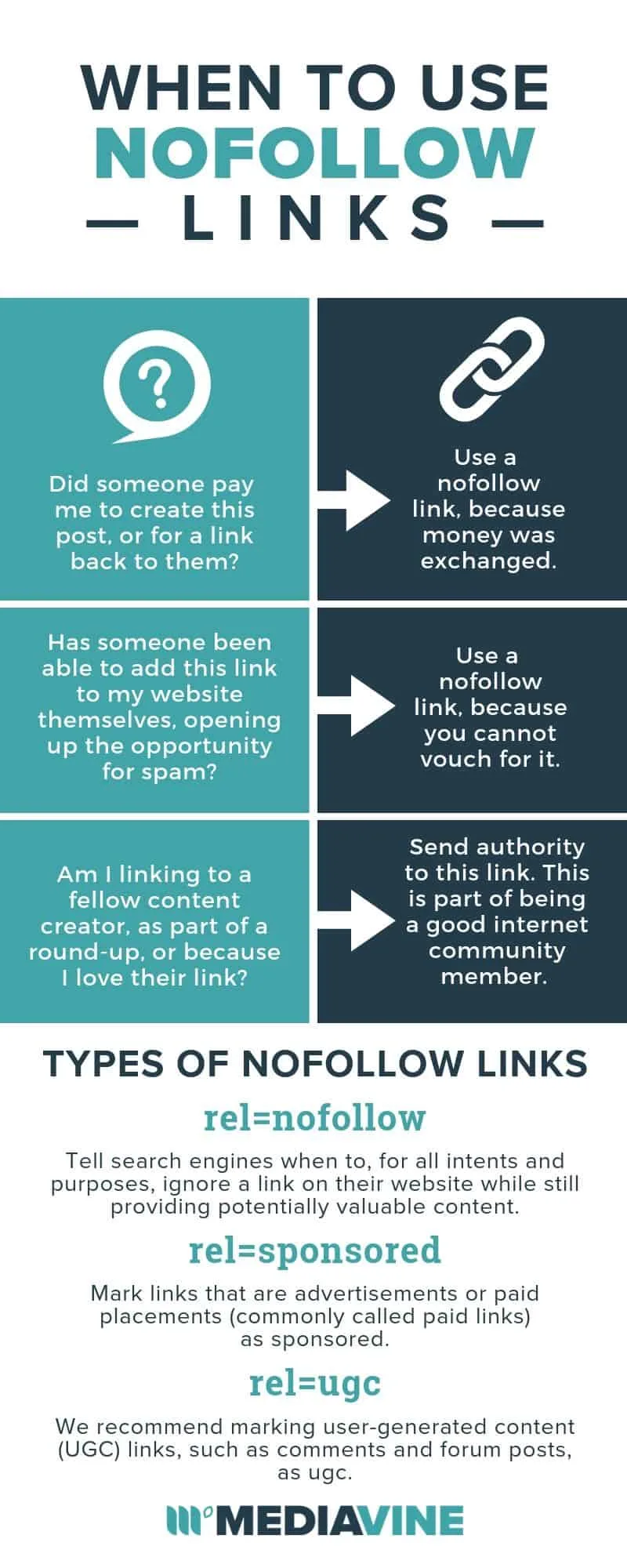When To Use No-Follow


Even when you’re a seasoned blogger, remembering when and how to use certain HTML attributes to keep the Google gods happy can be a little overwhelming.
None gets questioned (or rumored about) more than the mighty No-Follow attribute.
No-Follow is an HTML attribute that allows you to tell search engine crawlers of your site that they should not attribute any authority to the hyperlink you’ve put into your post. Knowing how to use No-Follow is an important part of getting your linking strategy right.
Many, many years ago (all the way back in 2005) Google originally announced this attribute as a way to help limit incoming spam links. Most problematically were spam bots leaving comments on websites, looking for link juice back to their own website.
By creating an attribute that allowed you to communicate directly to the search engine that you don’t want to give any authority or clout to a specific link, you get more control of your website, and your ability to do SEO effectively.
The problem is that many people then think that every outbound link on your website should be no-followed to only allow internal links to receive backlink clout.
While that’s certainly one way to interpret Google’s suggested use of the tool, I’d like to argue that it’s not in the spirit of what was intended.
You can look no further than Google’s 2019 update to the no-follow attribute, adding "rel=sponsored" and "rel=ugc", intended to help further qualify how you want Google to view a hyperlink to see that they’re looking for context in outbound links, not just whether or not you want that link to have some additional authority passed on by your choice to link to a page.

As a blog author, when you write your content and choose to link within it, you are providing long term details to Google about what is important in relation to the content you’ve written.
For years, Google has asked that if you are paid to include a link in your content, that it be marked No-Follow. But that didn’t really provide enough context.
You could also No-Follow a link to a site that seemed to have information your readers might find useful, but you weren’t sure how good the site was. And for years, every comment link has been No-Followed too.
Meaning that Google was blind to the different situations that might lead to an author choosing to No-Follow, and therefore blind to the additional context that might be found in the content they are indexing.
With the addition of these new attributes, it’s even easier to understand as the author when to use which attribute. We’ve created a handy dandy chart for you, in addition to the plain text below.
"rel=no-follow" |
Use this attribute when you want search engine crawlers to, for all intents and purposes, ignore that this link exists. They still see it, but they do not use it in their contextual analysis. |
"rel=sponsored" |
Use this attribute to tell Google that the link you’re providing was paid for by the company or person at the other end of the hyperlink. This should be used in outbound links to brands that have paid for content on your site, or individual people that have paid for you to link back to them in content you already have. |
"rel=ugc" |
Use this attribute when the content is “user-generated”, i.e. a comment or forum discussion. |

NO! Do not waste time changing all your old links. Make more content instead. Google has specifically stated:
No. If you use nofollow now as a way to block sponsored links, or to signify that you don’t vouch for a page you link to, that will continue to be supported. There’s absolutely no need to change any nofollow links that you already have.
– Google’s 2019 No-Follow Update
Any time that you can provide a search engine with more context, it’s a good thing.
While using these new types of No-Follow attributes in your new content won’t lead to improved ranking specifically, more data always means that a crawler might decide your content fits the bill better than a competitor based on other ranking factors thanks to the extra context it has.
Use these attributes as best practice going forward, in all of your newest blog posts. If you’re in an old one updating links anyway, consider fixing these since you’re already there.
By no means is it necessary to go back and update everything, nor is it going to lead to increased rankings if you do. Use your time wisely, and these attributes going forward as you make new content.
Stay up to date with the latest from Mediavine
Publishers spend time creating great content that keeps readers coming back, and we know that safeguarding that content and maintaining control over how it’s used are critical concerns in today’s …
 Eric Hochberger
Eric Hochberger
In a blog post last week, Google announced plans to launch generative AI into Search Labs with a new product called Search Generative Experience (SGE). What exactly is SGE, and …
Since ChatGPT’s release in November 2022, OpenAI’s prototype of generative AI — that is, artificial intelligence that can produce new content on demand — has dominated popular tech media. We’ve …